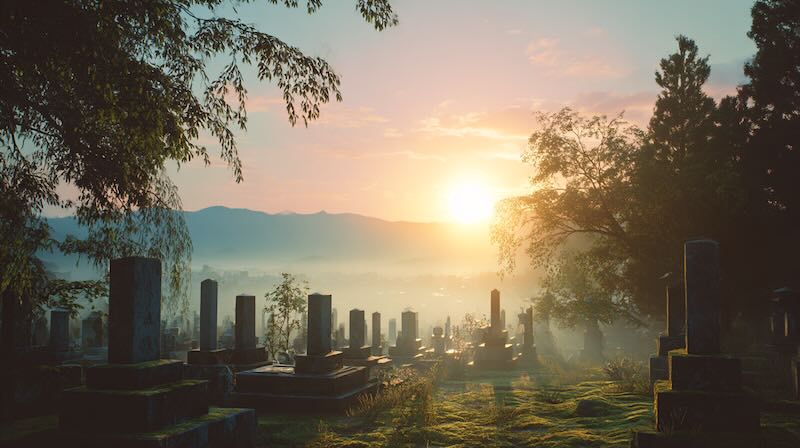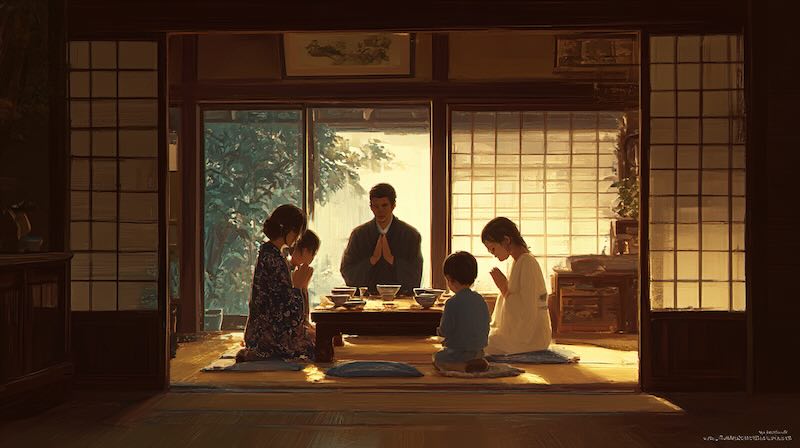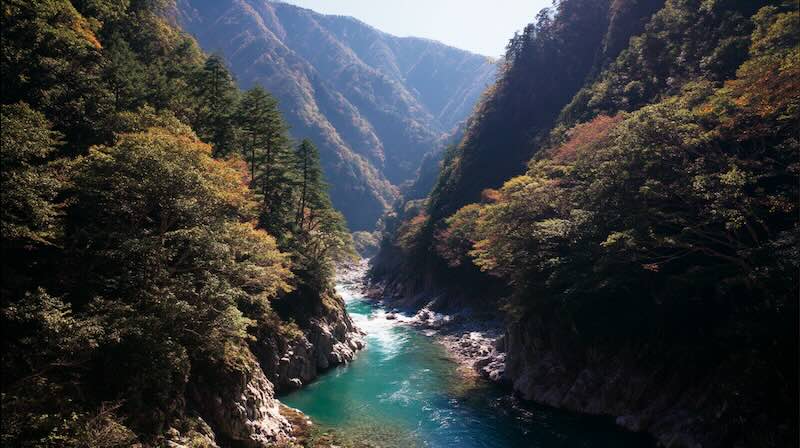Have you ever noticed that many traditional Japanese graves seem to face a particular direction? If you walk through an old cemetery in the countryside or near a Buddhist temple, you may find that most graves are aligned eastward.
This is no coincidence. The orientation of graves in Japan is deeply rooted in Buddhist beliefs, symbolic cosmology, and centuries-old views about death, rebirth, and the spiritual path. But why east, and not some other direction?
What Is the Typical Direction of Japanese Graves?
In Japan, especially in rural areas and older cemeteries, it’s common to find graves facing east. This practice is known as tōmuki(東向き), meaning “facing east.” While not a legal requirement, this direction holds significant religious and symbolic meaning.
In urban cemeteries, however, space constraints often override traditional orientation. So while many graves do face east, it’s not universal across modern Japan.
Historical and Religious Background
The east-facing custom is closely linked to Pure Land Buddhism (Jōdo-shū and Jōdo Shinshū), which became popular during the Kamakura period (1185–1333). In this tradition, Amida Buddha’s Pure Land—the ideal realm where souls hope to be reborn—is believed to lie in the west.
By positioning the grave to face east, the deceased is symbolically looking westward toward Amida’s Pure Land. This mirrors the posture of someone meditating or praying toward the west, preparing for spiritual rebirth and enlightenment.
At the same time, the east is associated with the sunrise in many cultures, including Japan. The rising sun represents renewal, hope, and the cycle of life, making it a fitting direction for the resting place of loved ones.
Cultural Significance in Japan
In Japanese culture, death is not the end but part of a continuing journey. The direction of a grave is not merely practical—it’s a way to express hopes for the soul’s peaceful transition.
Families may feel that an east-facing grave aligns the deceased with both cosmic order and ancestral traditions. The placement often guides how offerings are laid, how visitors pray, and where they bow.
This connection to nature and the spirit world is especially visible during equinox periods like Higan, when many families visit graves to honor ancestors. You can read more about this custom in Why Do Japanese People Visit Graves During the Spring Equinox?
Modern Practice and Travel Tips
Not all graves face east today. In densely populated cities, practical concerns often take precedence. Many modern cemeteries also offer flexible plot arrangements or columbarium spaces where direction isn’t emphasized.
That said, if you visit older graveyards in places like Kyoto, Nara, or rural temple grounds, you’re more likely to notice the traditional east-facing layout.
Travelers’ Tips:
- Pay attention to the grave’s orientation and how family members arrange incense and flowers.
- During services, monks may chant while facing west—symbolizing the welcoming of the soul into Amida’s paradise.
- In some Buddhist sects like Zen or Nichiren, grave orientation is less emphasized, or different inscriptions are used instead.
Common Misconceptions
❌ All Japanese graves face east.
Not true. While east is traditional, many graves today face different directions due to spatial or regional factors.
❌ Grave direction is regulated by law.
There are no legal requirements in Japan about grave orientation. It’s a matter of tradition and belief, not legislation.
❌ The direction has no spiritual significance.
On the contrary, for many families and Buddhist practitioners, grave orientation reflects deeply held beliefs about the afterlife and the soul’s journey.
Summary
Many Japanese graves are built to face east—not randomly, but as a meaningful expression of Buddhist faith, cultural values, and respect for natural cycles. This practice aligns the deceased with the rising sun and symbolically turns them toward Amida Buddha’s western paradise.
Next time you visit a Japanese cemetery, take a moment to notice the direction. It’s a small but powerful clue to how Japan sees death—not as a final destination, but as part of a greater spiritual path.


